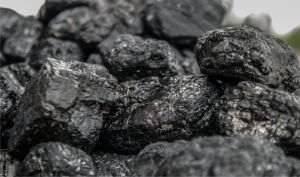Asia is becoming the new powerhouse in nuclear energy, according to an article published yesterday on the Zeroghedge website. According to the cited source, last year global nuclear energy production reached 2,817 terawatt-hours (TWh), surpassing the previous record and confirming the increasingly important role of this low-carbon source of electricity. Behind the figures, however, lies a fragmented reality: while some countries are accelerating the expansion of power plants, others are choosing to withdraw, prisoners of political pressure or public fears.
The cited source states that the most visible leap is being made by Asian countries. China recorded an increase of almost 13% last year, a percentage that contributes to doubling its nuclear energy production in a single decade. Basically, China has crossed the 450 TWh threshold, thus becoming a regional leader and a global engine of change. India and South Korea complete the picture, so that Asia-Pacific now concentrates more than 28% of all world production, double what it was ten years ago. It is a significant geopolitical mutation: the traditional dominance of the West is gradually giving way to economies willing to invest in the long term, with a strategic vision and state-backed capital.
North America remains stable on the surface, but fragile in depth. The United States leads the global ranking, with about 850 TWh of nuclear energy annually, which comes largely from aging plants that are difficult to maintain. However, the inauguration of the Vogtle 3 and 4 reactors, the first built in more than 30 years, brought a glimmer of optimism and more than 2,200 MW of new capacity. Canada, on the other hand, has dropped to 85 TWh, and Mexico continues to alternate between good and difficult years, depending on the availability of its reactors, say experts quoted by Zerohedge.
Europe is moving at two speeds in this nuclear energy race. France, once a global model, has fallen dramatically to 338 TWh, after maintenance problems and political uncertainties. Germany has permanently closed the nuclear chapter, and Belgium, Switzerland and Sweden are hesitating between extending the operation of nuclear power plants and withdrawing from this production sector. At the opposite pole, Eastern Europe is sending signals of resilience: the Czech Republic, Slovakia and Hungary are increasing production, Ukraine manages to maintain over 50 TWh annually even in war conditions, and Romania is preparing to implement SMR technology and put reactors 3 and 4 into operation. Other regions are making their presence felt through smaller but significant steps. The United Arab Emirates surprised the energy world with the Barakah plant, which brought over 40 TWh in just a few years, transforming the country into a new regional player. In Latin America, Brazil and Argentina are maintaining a steady level, while Africa remains at 13 TWh through South Africa's only nuclear power plant.
Japan, although it has restarted a few reactors, has not returned anywhere near its pre-Fukushima levels, remaining at 84 TWh compared to over 300 TWh in 2010. Taiwan is gradually withdrawing from nuclear power production, and Pakistan and Iran are recording modest but steady increases.
The big picture is clear: nuclear power is no longer the exclusive domain of Western democracies. The future is written in Asia and the Middle East, where massive investments and long-term political support are laying the foundations for solid expansion. For energy markets and investors, the direction is clear: the next big opportunity does not come from Europe or America, but from the East.
























































